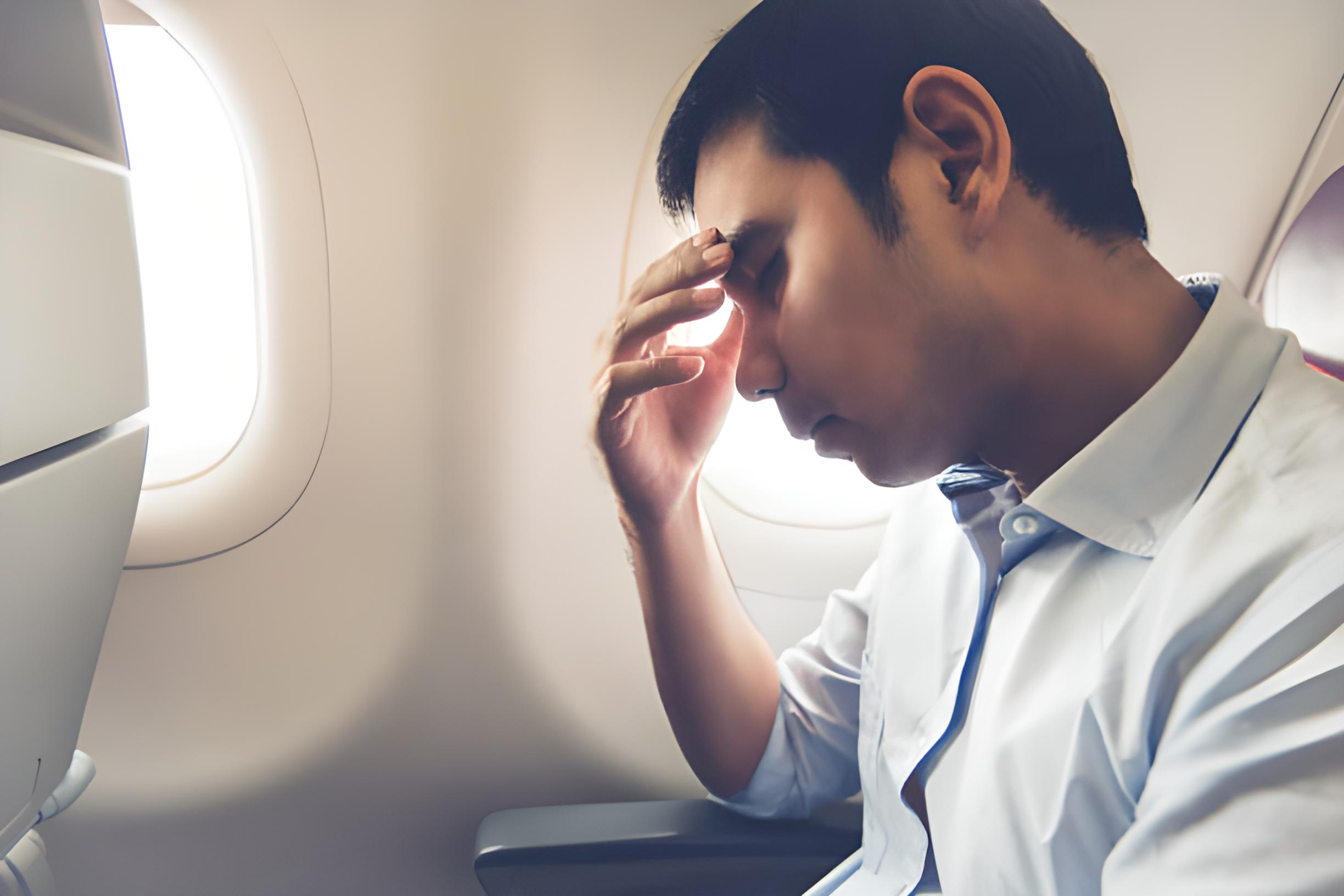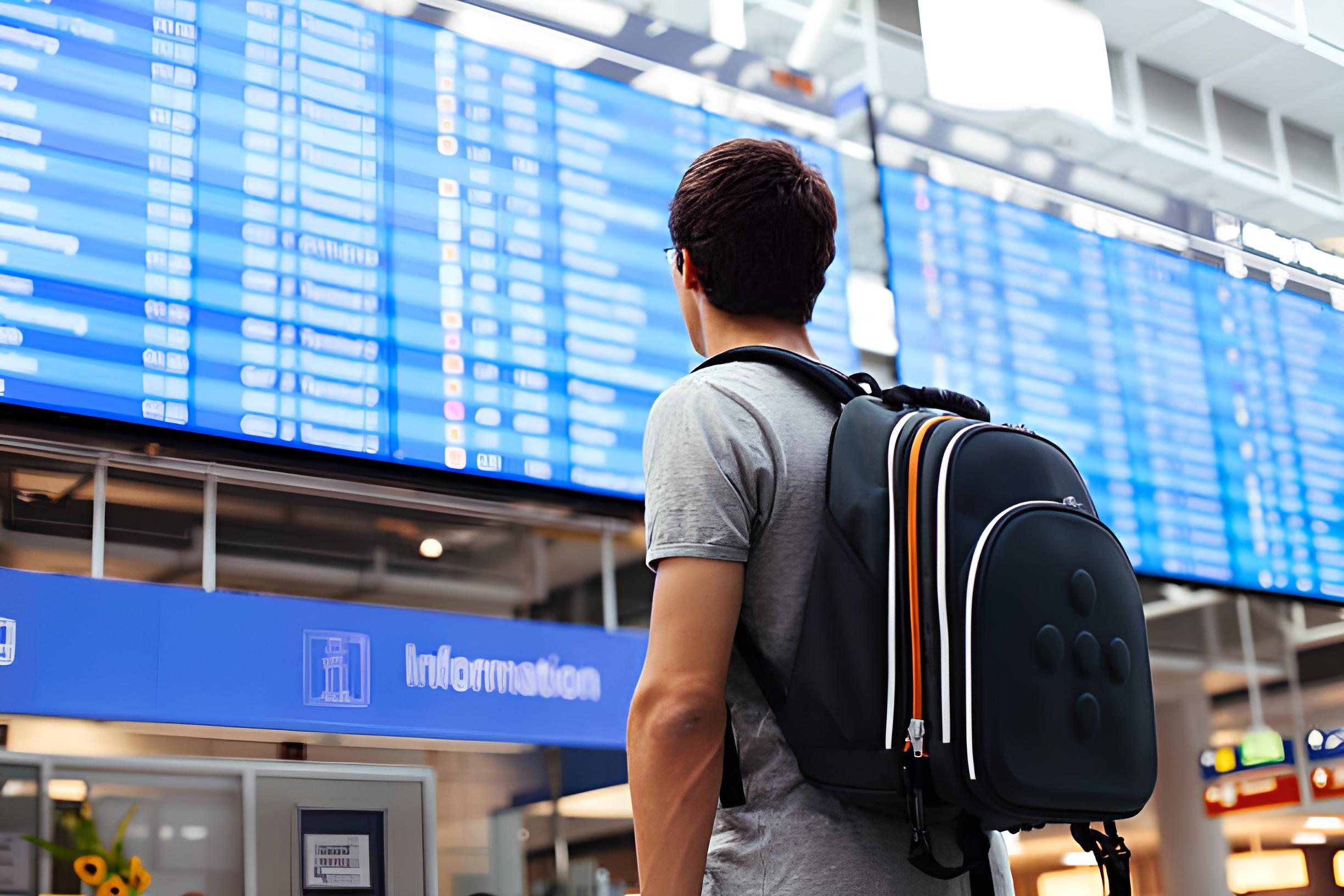Adjusting CPAP routines for jet lag is crucial for those who rely on continuous positive airway pressure (CPAP) therapy, especially when traveling across different time zones.
Jet lag, a temporary sleep disorder, arises from the body’s internal clock being out of sync with the new time zone. It significantly impacts sleep quality, causing disturbances that can be particularly challenging for individuals with obstructive sleep apnea (OSA). CPAP therapy plays a pivotal role in ensuring uninterrupted and restful sleep for OSA patients, making its proper management essential in the context of jet lag.
Understanding Jet Lag And Its Symptoms

Jet lag is a common issue faced by travelers, especially those who need to manage specific health routines like adjusting CPAP routines for jet lag. This circadian rhythm sleep disorder arises from crossing multiple time zones rapidly, causing a misalignment between the body’s internal clock and the new external environment.
It’s a significant consideration for individuals traveling with CPAP, as their sleep quality is crucially dependent on consistent and effective therapy.
The symptoms of jet lag vary but typically include:
- Difficulty falling asleep
- Waking up too early or too late
- Daytime fatigue
- Difficulty concentrating
- Mood disturbances
- Gastrointestinal problems
These symptoms are particularly disruptive for people with obstructive sleep apnea, who rely on CPAP machines to ensure quality sleep.
One of the main challenges of jet lag is its impact on the body’s circadian rhythms. These natural cycles dictate our sleep-wake patterns and are closely tied to the environmental cues of our regular time zone. When these cues are altered due to travel across different time zones, it can significantly disturb sleep patterns, making it harder to fall asleep and stay asleep.
The Relationship Between Sleep Apnea And Jet Lag
Obstructive sleep apnea (OSA) is a common sleep disorder characterized by repeated interruptions in breathing during sleep. These interruptions, or apneas, occur when the muscles in the throat relax excessively, blocking the airway. Individuals with OSA often rely on Continuous Positive Airway Pressure (CPAP) therapy to maintain a consistent airflow, preventing apnea episodes and ensuring quality sleep.
When it comes to traveling and sleep apnea, jet lag can pose significant challenges.
Jet lag disrupts the body’s internal clock, or circadian rhythm, which regulates sleep and wakefulness. For individuals with sleep apnea, this disruption can exacerbate their symptoms. The usual patterns of sleep are altered, which can interfere with the effectiveness of their CPAP therapy. As sleep patterns shift due to jet lag, so too does the requirement for CPAP usage, making it crucial to adjust the routine accordingly.
Maintaining CPAP therapy during travel is vital for individuals with sleep apnea. Traveling across different time zones can significantly impact the body’s internal clock, leading to irregular sleep patterns. Consistent use of CPAP helps mitigate these effects by ensuring the airway remains open during sleep, regardless of the changes in sleep schedule caused by jet lag.
Adjusting Your CPAP Routine Before Travel
When planning a trip, especially for those managing jet lag and CPAP routine, preparation is key. Adjusting your CPAP routine before travel can significantly mitigate the effects of time zone changes on sleep quality.
Strategies And Tips For Time Zone Changes
- Start adjusting your sleep schedule a few days before departure. Gradually shift your bedtime and waking time closer to the schedule of your destination. This gradual change helps your circadian rhythm adapt more smoothly to the new time zone.
- Light exposure plays a crucial role in resetting your body’s internal clock. Seek natural light exposure during the morning in your destination’s time zone, as it can help adjust your circadian rhythm more quickly.
- Consider the direction of travel. If you’re traveling east, it’s generally harder to adjust as it requires advancing your body clock. Traveling west, on the other hand, involves delaying your internal clock, which is often easier to adapt to.
The Role of Sleep Medicine Specialists
- Consulting with a sleep medicine specialist is highly beneficial. They can provide tailored advice on adjusting your CPAP settings and sleep schedule based on your specific needs and travel itinerary.
- They can also recommend additional sleep aids or strategies, such as light therapy, to assist in the adjustment process.
Gradual Adjustment of Sleep Schedules
- The goal is to mimic the sleep patterns you’ll need at your destination. If possible, try to align your meal times and activities with the new time zone as well.
- Remember to adjust your CPAP machine’s clock to match the destination time zone upon arrival. This ensures the device’s data logging and functioning align with your current sleep schedule.
By taking these proactive measures, you can maintain your therapy’s effectiveness and enjoy a more comfortable and restful trip.
Managing CPAP Therapy During Your Flight

For those dealing with jet lag and sleep apnea, managing CPAP therapy during a flight is a critical aspect of adjusting CPAP routines for jet lag. Ensuring that your CPAP machine functions effectively while in the air can make a significant difference in managing sleep apnea symptoms during your journey.
Tips For Using CPAP Machines On Airplanes
- Prior to your flight, check with the airline regarding their policies for carrying and using a CPAP device on board. Most airlines allow CPAP machines as a carry-on, but it’s essential to confirm.
- Make sure your CPAP device is labeled as medical equipment. This often allows it to be carried in addition to your regular luggage allowance.
- Consider bringing a travel-sized CPAP machine, which is more compact and convenient for in-flight use.
Adjusting CPAP Settings For In-Flight Use
- You may need to adjust the humidity settings on your CPAP machine, as airplane cabins tend to have dry air. Reducing humidity can prevent condensation in the tubing.
- Ensure that your CPAP machine is fully charged or has an appropriate power source, such as a battery pack, especially for long flights.
Coping Strategies For Long-Haul Flights
- Try to maintain your regular sleep schedule as much as possible during the flight. Use your CPAP machine during your usual sleeping hours.
- Engage in relaxing activities before trying to sleep, such as reading or listening to calm music, to create a conducive sleep environment.
- If you are crossing multiple time zones, gradually adjust your sleep schedule towards your destination’s time zone during the flight.
Also Read: CPAP and Travel: Navigating TSA and Security Checkpoints
Adapting To New Time Zones
Adapting to new time zones is a critical part of managing sleep health for individuals who travel frequently, especially for those using CPAP therapy. Successfully adjusting your internal clock to align with the local time can significantly improve sleep quality and overall well-being.
Strategies For Adjusting to New Time Zones
- Upon arrival, try to adapt to the local schedule as soon as possible. This means eating, sleeping, and engaging in activities according to the local time.
- Exposure to natural light is one of the most effective ways to reset your body’s internal clock. Spend time outdoors during daylight hours, especially in the morning, to help your circadian rhythms adjust to the new time zone.
- If you arrive during the day, resist the urge to nap. Staying awake until a reasonable local bedtime can help accelerate the adjustment process.
Importance of Light Exposure In Resetting The Body Clock
- Light is a powerful cue for the circadian system. It signals to your brain whether it’s time to be awake or asleep.
- In addition to natural sunlight, light therapy devices can also be used to mimic outdoor light, especially if natural light exposure is limited.
Adjusting CPAP Use In Accordance With Local Time
- As soon as you arrive at your destination, adjust your CPAP machine’s clock to the local time. This ensures that any features tied to specific times, such as pressure relief at certain hours, are synchronized correctly.
- Be mindful of your sleep environment. Ensure it’s conducive to good sleep, as this will help in adjusting your sleep pattern more effectively.
Combating Jet Lag Symptoms With CPAP Therapy
Effective management of CPAP therapy is essential in combating jet lag symptoms, particularly for individuals with sleep apnea. Adjustments to CPAP settings and routines can play a pivotal role in maintaining quality sleep amidst the challenges posed by jet lag.
Role of CPAP In Maintaining Quality Sleep Amidst Jet Lag
- CPAP therapy is crucial for ensuring uninterrupted sleep, especially when the body’s internal clock is disrupted due to jet lag.
- Consistent use of CPAP helps mitigate common jet lag symptoms like disturbed sleep patterns, ensuring that individuals with sleep apnea get the rest they need.
Tailoring CPAP Settings To Cope With Circadian Rhythm Changes
- Adjusting the pressure settings of your CPAP machine may be necessary to accommodate the changes in your sleep patterns due to jet lag.
- It’s important to monitor how you feel and consult with a sleep medicine specialist if you’re experiencing discomfort or difficulty sleeping with your usual settings.
Incorporating Sleep Aids And Additional Therapies
- In addition to adjusting your CPAP settings, incorporating sleep aids such as melatonin supplements can be beneficial. These aids can help realign your circadian rhythms to the new time zone.
- Light therapy is another effective tool in regulating the circadian rhythm. Exposure to light therapy lamps during specific times can aid in resetting your internal clock.
Long-Term Management And Preventive Measures
For frequent travelers, especially those adjusting CPAP routines for jet lag, long-term management and preventive measures are key to handling circadian rhythm sleep disorders. Understanding how to minimize the impact of crossing time zones can significantly improve sleep quality and overall health.
Circadian Care For Frequent Travelers
- Frequent travelers should be mindful of their circadian rhythms and take proactive steps to maintain them. This includes maintaining a regular sleep schedule as much as possible, even when not traveling.
- Strategies like gradually adjusting sleep times before a trip and seeking light exposure to realign the circadian rhythm are effective in managing these disorders.
Easing Time Zone Transition
- Planning travel schedules to minimize drastic changes in time zones can help in reducing the severity of jet lag.
- Utilizing techniques such as light therapy and melatonin supplements can be effective in preemptively adjusting the body’s internal clock to new time zones.
Regular Sleep Medicine Check-Ins
- Regular consultations with sleep medicine professionals are crucial for those who frequently travel. These experts can provide personalized advice and adjustments to CPAP therapy and sleep habits.
- Continuous monitoring and follow-up ensure that any changes in sleep patterns or CPAP effectiveness are addressed promptly, maintaining optimal treatment efficacy.
Adopting these long-term management strategies and preventive measures, coupled with regular medical consultation, can significantly aid frequent travelers in maintaining their sleep health and quality of life, even as they navigate the challenges of different time zones.
Optimize Sleep On The Go – Visit Resway Now!
Adjusting CPAP routines for jet lag is vital for those with sleep apnea, particularly during travel. It’s a journey of balancing CPAP therapy with changing time zones, requiring ongoing management and adaptation.
Resway, a top online seller of CPAP supplies, offers products to make travel with CPAP more comfortable. Their range can aid in managing these transitions smoothly.
Adapting to new routines and environments demands patience. Regular consultations with sleep specialists and staying updated on CPAP advancements are key to ease this process. Ultimately, effective management of your CPAP routine enhances sleep quality and overall well-being, making travel enjoyable and restful.



